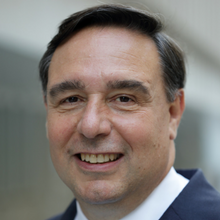Fondly referred to as “mini Africa” by local residents, Sabon Gari is one of Nigeria’s biggest markets, where you can find anything from electronics and clothes to toys and hardware. Shops here used to depend on expensive diesel generators for electricity. But today, thanks to a new solar mini-grid, shop owners say they now spend just a fraction of what they used to previously on electricity.
More than 5000 miles (8000 kms) away, in the remote island of Monpura in Bangladesh, Lhota Khatun runs her own sewing business out of her bedroom, thanks to a solar mini-grid installed on the island. Since 2016, she has had dependable electricity access that helps her work at night, after her children are in bed.
Sabon Gari and Monpura represent communities around the world that, today, are more productive and prosperous through reliable and affordable access to electricity.
Energy is at the heart of development. Access to electricity makes communities safer, helps small businesses thrive and powers essential services such as schools and clinics. It also helps provide a conducive environment for investments, innovations and new industries that spur growth and provide jobs for entire economies.
The World Bank constantly works with governments to tailor solutions to suit every country’s unique energy needs. These approaches, led by countries, are working.
For example, a new $350 million electrification program in Nigeria is expected to attract $410 million in private investment, and create a vibrant market for mini grid and off-grid energy solutions.
In Kenya, the World Bank supports more than $1.3 billion of generation, transmission, distribution and off-grid investments, helping the country more than double electricity access rates from 23 percent in 2009 to 56 percent in 2016. A new $150 million off-grid project is designed to provide service to another 240,000 households living in more remote and poorer areas.
And in Bangladesh, the World Bank supports the largest off-grid solar program in the world, powering over four million households through solar home systems, 1,000 solar irrigation pumps, and 13 solar-based mini-grids. More than 18.5 million people in rural Bangladesh now have reliable access to solar-powered electricity through this program.
Altogether, between 2014 and 2017, the World Bank helped deliver new and improved electricity services to more than 45 million people.



